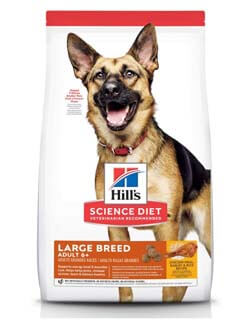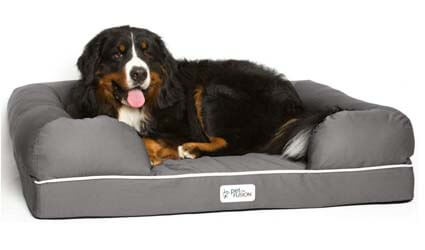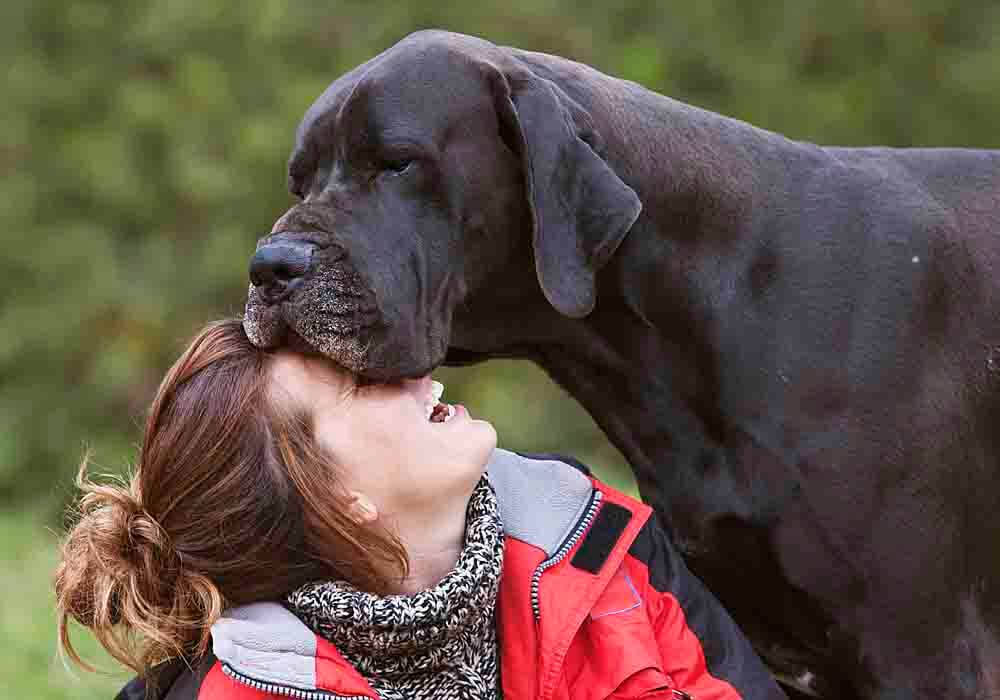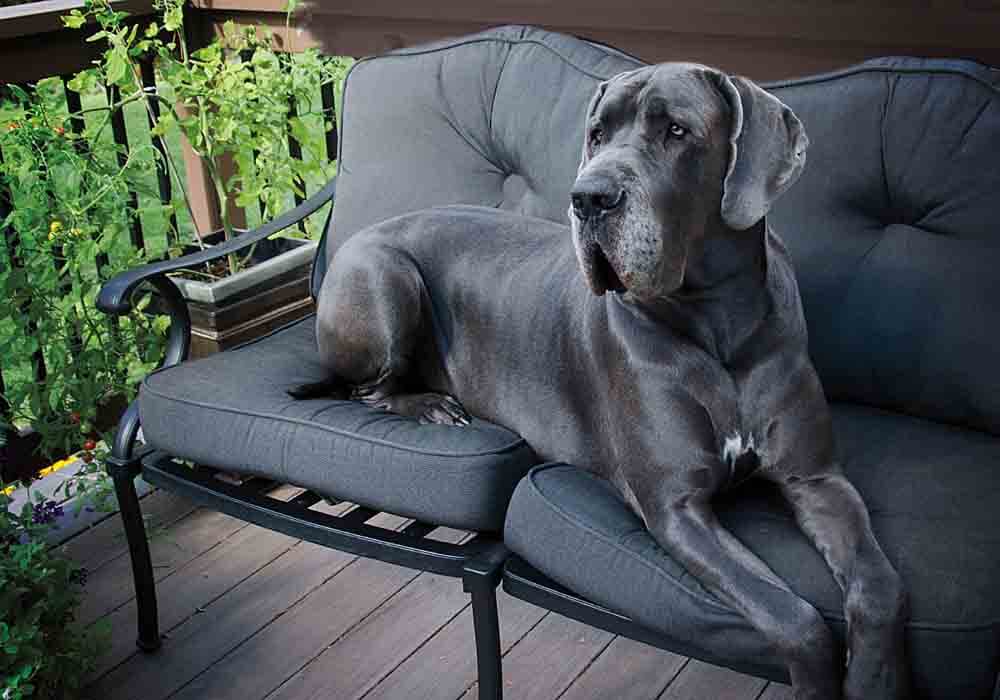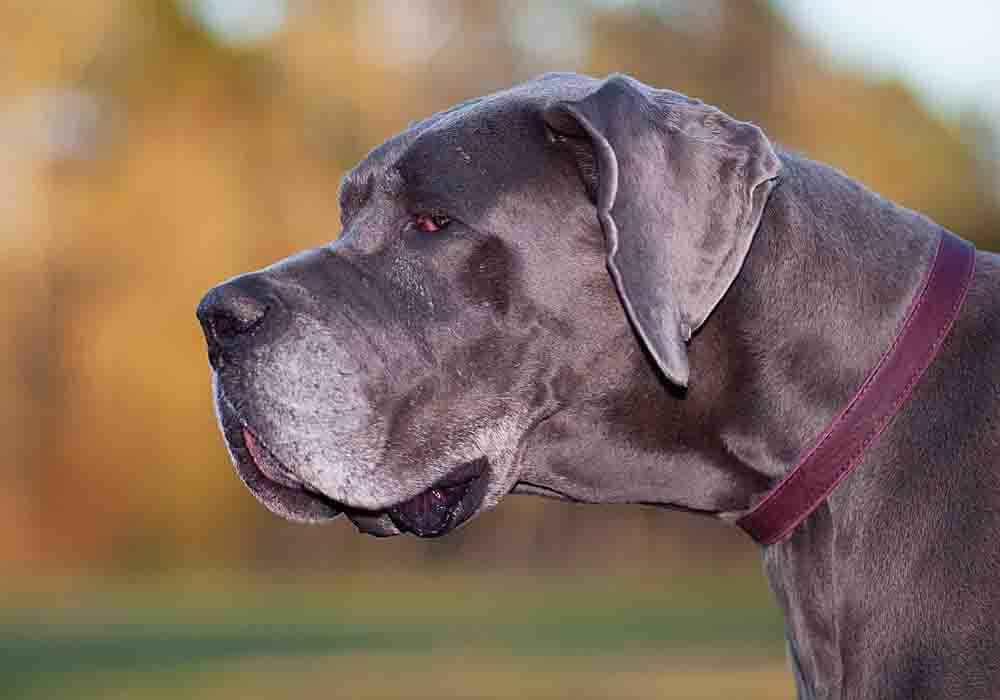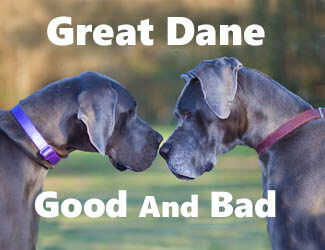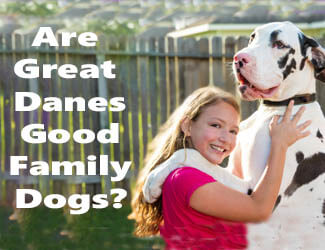Senior Great Dane Care
Health, Diet, And Comfort
Are Just A Small Part Of Their Care...
by Ken Alden
As all dogs get older their needs change and the same goes for senior Great Dane care. As these beautiful giants age, they have certain things they need in order to remain happy and healthy. So, how do you properly care for one of these big dogs as they age?
Tips for senior Great Dane care...
- Be watchful of potential health problems early on
- A balanced diet is important as well as eating the right amounts
- Comfort is important for aging joints and a great dog bed is a good investment
- Beware of changing behaviors due to aging...incontinence, aggressiveness, weight loss, loss of appetite are all possibilities.
Let’s take a closer look at how to care for your senior Great Dane. Read More Below...
Pro-tip: Ever try lifting a Great Dane? Their weight can hurt not only your back but their joints when they hop down from cars, sofas or even your bed. To protect your back and theirs check out the best Mastiff ramps on Amazon.com now.
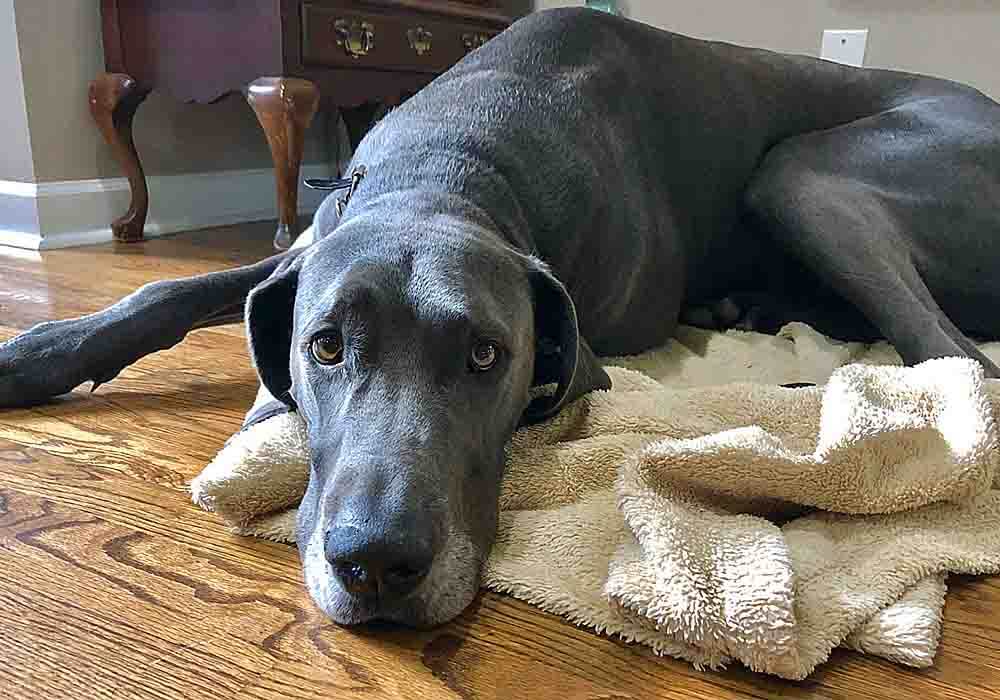
At What Age Is a Great Dane Considered a Senior?
As a larger dog, Great Danes have the misfortune of not having a longer lifespan. These dogs can live as long as 12 years, while most only live 8 to 10 years. However, there are some who will only live 6 to 7 years. In order to ensure a long life for your Great Dane, it’s important to keep them as healthy as possible.
So, at what age is a Great Dane considered a senior? When a Great Dane reaches the age of about 5 to 6 years old, the dog should be considered a senior. It’s at this age when you’ll typically start to see the signs of old age creep in.
Great Dane Senior Years...Here's The Signs
As dogs age, there are always signs of it happening. When a Great Dane ages, there are a few things you can watch out for. You’ll want to contact the vet with any concerns you have for your Great Dane. senior great dane care
Wobbler Syndrome
Wobbler syndrome is a serious medical condition for all dogs. What happens is the nerves in the dog’s neck become compressed and cause their legs to function badly. A Great Dane with this disease will have a hard time walking.
While it isn’t typically fatal, Wobbler syndrome is serious and could lead to more permanent damage if left untreated. If you notice your Dane keeping his head down, or they may start walking strangely. Both of these are meant to avoid the pain they are feeling in their neck or keep from falling down.
Lumps and Bumps
Lumps and tumors are common in older dogs. Depending on what they are, they could be harmless. However, some of them could also be cancerous. It’s important to have a vet look them over, just in case. There are a few different kinds of lumps, bumps, and tumors that your Great Dane could get as they age.
- Warts - A dog can get warts no matter what their age, and these aren’t harmful to your Dane.
- Mast cell tumors - These tumors are the most common harmful lumps your dog could develop. They start out as little red bumps and can spread and grow quickly.
- Fatty tumors - Fatty tumors are very common in older dogs. They can grow anywhere on their body and be any size, but they aren’t usually harmful.
Regardless
of what you might think about the lumps or bumps, it’s always important to bring them to the attention of your vet. They’ll be able to test
them for cancer or other dangerous diseases. senior great dane care
Pro-tip: Great Dane anxiety, aggression, destructive chewing, jumping up, fearfulness, and other behaviors can be controlled with the right training program.
Here’s a great course that
addresses these issues along with many other dog training basics: Check it out now!
Elderly Great Dane Health Problems
Due to their large size, there are many health concerns that Great Danes face as their age. While there are many, there are four that are the most common and the most prominent for senior Great Danes.
Joint Pain and Arthritis
Because of their size, Great Danes are predisposed to having joint pain as they get older. These dogs can grow to weigh well over 100lbs. That’s a lot of strain on the joints, which can cause pain for the dog. Arthritis is when the protective cartilage around the joint is worn down or gone.
You can tell if your Dane is suffering from joint pain or
arthritis if you notice they aren’t walking as much, having trouble getting up,
moving slowly, or yelping in pain when they move. Keeping a healthy diet and
giving your Great Dane plenty of exercise will help minimize their risk of
developing these conditions.
Hip Dysplasia
Hip dysplasia ties in with arthritis in Great Danes. This is a deformity in the dog’s hip socket that will eventually lead to arthritis and joint pain when the dog gets older. If the deformity is found early enough, it can be fixed through surgery.
Some symptoms
of hip dysplasia are stiffness, slow
activity, swaying, and decreased thigh muscles. They’ll also have trouble with
jumping, running, and climbing. If you suspect your Great Dane of having hip
dysplasia, you should contact your vet.
Cancer
Cancer is a common disease found in older dogs. Typically, the most common types of cancer are bone cancer and skin cancer. The key to treating cancer in dogs is to find it as early on as you can.
Due to how short their lifespans are, it’s important to have your vet look at any lumps that develop in your senior Great Dane. Make regular visits to your vet to ensure any cancers are found as quickly as possible.
Lumps and bumps are pretty common on elder Great Danes and we discuss this further as to what they might be in this article of ours here.
Senior Great Dane Bloat
Bloat is a deadly disease that can be found in dogs of any age but is most common in larger breeds. When a Great Dane has bloat, the stomach distends and twists on itself. This causes a lack of blood flow that could potentially kill the dog.
This condition comes on fast and needs to be treated as soon as possible. The only thing that will help your Dane is immediate surgery, so it’s important to get your dog to the vet if you see any of the following signs:
- Excessive panting or difficulty breathing
- Stomach is distended
- Restlessness
- Gagging, or attempting to vomit with nothing coming up
A healthy and balanced diet can help prevent your Great Dane
from developing bloat. Also, controlling when and how much they eat and drink
will help avoid this disease.
Senior Great Dane Diet
Part of keeping your Great Dane healthy is to feed them a well-balanced diet. This goes beyond just the best kind of food. You also need to know how much to feed them and when the best time would be. senior great dane care
How Much Should a Senior Great Dane Eat?
As Great Danes grow, they require a certain amount of calories in order to maintain a healthy lifestyle. The older the Dane gets, they will require fewer calories. A normal adult Great Dane will typically need to eat 2,500 calories, while a puppy will need 3,000 calories.
An older Great Dane won’t need as many calories. Senior Great Danes will only need about 2,000 calories a day. You want to make sure they are getting 23% protein and 12% fat from their food. You’ll also want to stick to feeding them at least two to three times a day. You can gauge this on how much weight they are gaining or losing.
You don’t want to give them access to their food all day, so those feeders that dispense food over time aren’t a good choice for Great Danes. Too much weight gain is hard on their joints.
A good rule to follow is to feed your Great Dane eight to ten
cups for males and six to eight cups for females. However, it’s always best to
consult your vet before changing your senior Great Dane’s diet.
Best Dog Food for a Senior Great Dane
When it comes to dog food, you want to make sure you’re giving your senior Great Dane the very best option available. When your Great Dane is around five to six years old, you can start making that transition to a food that is best suited for older dogs in this breed.
It’s important to talk to your vet before switching your senior over to a new dog food. They’ll be able to tell you if there needs to be more or less protein. Below you’ll find three of the best types of dog food you can find on Amazon.com
Hill’s Science Diet Dry Dog Food
The creators of this dog food used science to come up with a great formula for senior dogs. There isn’t as much protein in this dog food, but some dogs don’t need high amounts of protein in their diet.
The main protein in this dog food is chicken meal. This is great to help with aching joints. This dog food also has tons of antioxidants that will be beneficial to the heart and kidneys.
Purina Pro Bright Mind Senior Dry Dog Food
Consider this dog food for seniors that are over seven years old. This option has tons of great ingredients that will help senior Great Danes be more alert and promote a healthy heart.
In addition to that, this dog food has a high-calorie count. If your Great Dane is still really active, this could be a great option for you.
Blue Buffalo Life Protection Healthy Weight
This dog food has a great balance of protein and fat so that your Great Dane’s diet is just right. There is also a larger amount of glucosamine, which helps keep their bones and joints healthy.
There is also a high percentage of fiber, which will help your Great Dane feel full. This prevents them from overeating and gaining too much weight. With a healthy weight, this dog food can also help keep their joints from aching.
Pro-tip: Great Dane's (and their owners) love dog crates…and for good reasons. Crates keep dogs from mischief while you're away, are perfect for house training, for traveling by car, and provide the dog a place to de-stress. Check out the best Mastiff crates on Amazon.com now.
Keeping Older Great Danes Comfortable
When you are caring for your senior Great Dane, you want to make sure they are comfortable. As they age, it becomes more and more likely they will develop arthritis and joint pain. It can be hard to watch them get up from an uncomfortable dog bed.
There are plenty of beds out there to choose from. Many of them have been designed for dogs with arthritis. What you want to make sure you look for is the appropriate size for your dog. The best kind of bed for senior dogs are orthopedic ones.
A great dog bed can be an important investment for your senior Great Dane. You want to find a bed that offers extreme support in order to relieve those pressure points that are prone to arthritis. senior great dane care
The best way to do that is to find firm, memory foam beds. If the bed is too soft, it will make things harder for your dog to get out of bed. Below you’ll find three great dog beds that work for your senior Great Dane.
- PetFusion Ultimate Dog Bed - This bed uses memory foam for healthy joints. It also has a removable, waterproof cover to make cleaning easier. It also has headrests around the sides of the bed for maximum comfort for your senior Great Dane.
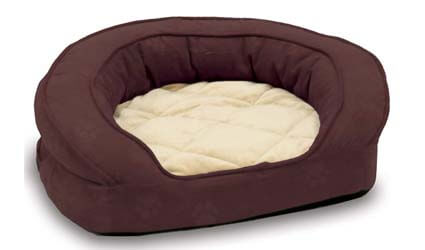
- K&H Deluxe Ortho Bolster Sleeper - This is a great option for senior Great Danes that like to sleep in a ball, rather than sprawled out. It’s made from that orthopedic foam that helps promote joint health. It also has removable covers for easy cleaning.
- Big Barker Orthopedic Dog Bed - Another great option is using orthopedic foam for those seniors that may have arthritis. It has a removable cover and uses a special foam that keeps it cool no matter where it is. They also offer a warranty. If it doesn’t keep 90% of its shape for 10 years, they’ll replace it.
Older Great Dane Behavior
As your Great Dane gets older, there is a risk that they’ll experience a shift in behavior. This can be upsetting for pet owners, but knowing what to expect before it happens can make things easier to handle.
Senior Great Dane Incontinence
While this isn’t quite a behavior, it can potentially affect how they behave. When Great Danes enter their senior years, they risk losing control of their bladder and digestive systems. This can result in urinating without meaning to or leaving droppings unexpectedly.
It isn’t uncommon for Great Danes, and oftentimes when they experience these accidents, they become very upset. It’s quite possible for them to not be aware that anything is wrong with them, and that can be very scary for them.
There are two ways you could help your senior Great Dane with this. There are diapers made for aging dogs and can help prevent your Dane from going to the bathroom inside the house. It could also help keep their stress levels down.
The other option is to simply allow them more outside access so
they can use the bathroom there, rather than inside. This could be difficult to
do, especially if you work away from home. However, you could use a doggy
diaper in between those times you can’t get your Great Dane outside. senior Great Dane care
Older Great Dane Becoming Aggressive
Typically, your Great Dane’s temperament is going to be laid-back and good-natured. However, as your Great Dane ages, this can change into something more aggressive.
As dogs age, it’s very possible that they’ll become aggressive when they weren’t previously. Just like with people, their memories will start to fade, and pain will be a regular occurrence. This can be frustrating and frightening for a dog who isn’t fully aware of what’s happening to them.
Because of this, they’ll lash out in ways they may not have before. They may become more cautious toward you or other family members. They may even be less eager to go for walks and may snap at you if you try to force them.
The best way to deal with new aggression in your senior Great
Dane is to take them to the vet. They will be able to determine if your dog is
lashing out due to pain or an underlying medical condition.
Senior Great Dane Losing Weight
There are many reasons why a senior Great Dane may be losing weight. The biggest reasons, however, are due to diabetes and loss of appetite.
Diabetes causes your senior Great Dane to have an inability to make insulin for themselves. That means that your dog won’t be able to absorb the blood sugar levels and use it for energy. This can cause your dog to eat more but lose weight.
Another reason for your senior Great Dane could be losing weight
is a loss of appetite. This can be caused by serious health problems, so it’s
important to take your dog to the vet if you noticed a severe loss of appetite.
Older Great Dane Not Eating
When
a senior Great Dane doesn’t eat, it can be caused by a variety of reasons.
There are many health concerns that can cause this, such as cancer or stomach diseases such as bloat. As with
any changes to your senior Great Dane’s diet, you should consult a vet to make
sure there aren’t any serious problems causing the change.
Senior Great Dane Care...Final Thoughts
Even though the senior years for a Great Dane come early on, you’ll be able to keep them happy and healthy with the help of this guide. Hopefully, it has been helpful in providing you with everything you need to know to care for your senior Great Dane.
Return to the top of this Senior Great Dane Care page

About the Author...
Ken Alden, a dedicated Mastiff owner for over eight years, is acclaimed for his expertise in care, grooming, and training. Read more About Me and my dog Shadow.
- Mastiff Guide Home ›
- Great Danes ›
- Senior Great Dane Care
